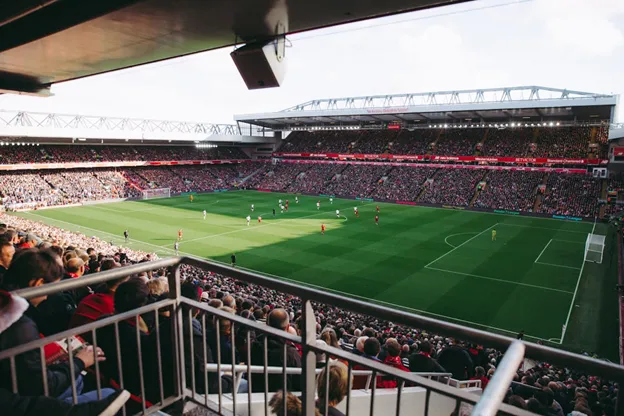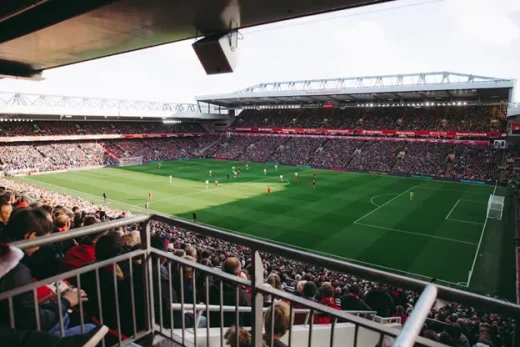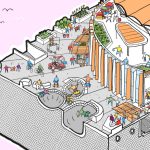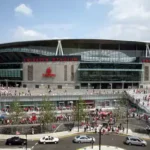From blueprint to field, The evolution of sports arena design, Huge sporting arena architecture, Global structures
From Blueprint to Field: The Evolution of Sports Arena Design
2 September 2024
When fans walk into a sports arena, they are often struck by its size and energy. The roar of the crowd and the wide-open field create an unforgettable atmosphere. Every element is designed to maximise the fan experience.
Sports arenas have come a long way from their early beginnings. The Colosseum in Rome, built around 70-80 AD, is one of the oldest examples of early sports architecture. Today, arenas like SoFi Stadium in Los Angeles blend modern design with advanced technology, showing how far arena design has evolved.
This article will explore how sports arenas have transformed from ancient structures to the current cutting-edge facilities. We’ll look at the technological advancements, the role of sustainability, and the future of these iconic structures.
The Origins of Sports Arenas
The history of sports arenas dates back thousands of years, with the Colosseum being a prime example of early arena design. This iconic structure was a place to watch gladiatorial contests and a symbol of the engineering prowess of its time.
The Colosseum’s design focused on maximising visibility and accommodating large crowds, much like how modern arenas use advanced features to enhance the spectator experience. These include providing clear displays of game information like a line betting example (news.topsport.com.au – offline when checked 9 April 2025), live odds, and other relevant info during sports events, to help fans better understand the stakes and strategies when it comes to placing bets.
These early arenas were primarily built for functionality, with little consideration for comfort or technology. Seating was often hard and uncomfortable, and amenities like restrooms or concession stands were absent. However, these structures laid the groundwork for the more advanced arenas in later centuries.
Advancements in Arena Design
As technology and engineering improved, so did the design of sports arenas. The introduction of steel and concrete allowed the construction of larger and more complex structures. This led to the development of features like retractable roofs and more comfortable seating arrangements, which made the fan experience more enjoyable.
Modern architecture has also significantly shaped the functionality and aesthetics of sports arenas. Today’s designs are focused not only on accommodating large crowds but also on enhancing the overall experience. Features like large video screens, advanced sound systems, and comfortable seating make the game day more engaging.
Modern-Day Icons
Some of the most notable modern sports arenas, such as SoFi Stadium in Los Angeles and AT&T Stadium in Arlington, Texas, have set new design and fan engagement standards. These venues are marvels of modern engineering, incorporating cutting-edge technology that enhances the fan experience in previously unimaginable ways.
AT&T Stadium, for example, features one of the world’s largest high-definition video screens, ensuring every fan has a clear view of the action on the field regardless of their seat.
These technological enhancements go beyond just offering a better view; they play a crucial role in helping fans connect with the game on a deeper level. Instant replays, live statistics, and interactive elements are all displayed in stunning clarity, making it easier for spectators to follow the game’s intricacies.
The Cultural Impact of Sports Arenas
Sports arenas are more than just venues for games; they are cultural landmarks that reflect and shape the identity of their communities. From Madison Square Garden in New York to Wembley Stadium in London, these arenas symbolise local pride and host significant events. The presence of a central sports arena can revitalise a neighbourhood by boosting tourism, creating jobs, and supporting local businesses.
Sports arenas also serve as communal spaces where diverse groups gather to share live events’ excitement. These venues create lasting memories from a championship game or a historic concert that resonate deeply with fans and locals alike. In this way, arenas contribute to a city’s collective identity, embodying its spirit and history.
As they evolve, sports arenas are increasingly designed to engage with the broader community. Newer venues are built with multipurpose capabilities, allowing them to host various events that appeal to different population segments. This approach strengthens the arena’s role as a cultural hub and ensures its continued relevance.
The Role of Sustainability
As awareness of environmental issues has grown, the importance of sustainability in sports arena design has become more prominent. Modern arenas are increasingly built with eco-friendly materials and energy-efficient systems. For example, many new arenas use solar panels to generate electricity and incorporate rainwater harvesting systems to reduce water usage.
Sustainability isn’t just a trend; it’s becoming a standard practice in arena design. Reducing their environmental footprint helps these structures support the planet and set an example for other large buildings. Fans are becoming more aware of these arenas’ environmental impact and are increasingly expecting venues to be as green as possible.
Future Trends in Sports Arena Design
Looking ahead, the future of sports arena design will likely be shaped by technological advancements and a continued focus on sustainability. We can expect to see more “smart” arenas that use technology to enhance the fan experience even further. This might include personalised seating areas, virtual reality experiences, and more interactive elements that engage fans in the arena and at home.
The integration of digital technology will likely play a vital role in the future of arena design. Imagine being able to order food from your seat with the tap of a button or getting real-time stats and updates directly to your phone. These innovations could make attending a live event even more immersive and enjoyable.
Conclusion
Sports arenas have evolved from simple gathering places into complex structures that enhance the fan experience in countless ways. The design of these arenas remains crucial in providing an engaging and enjoyable environment for every sports fan.
As we look to the future, it’s clear that the evolution of sports arenas will continue to shape how we experience live sports events, making every game day something special.
Comments on this guide to From Blueprint to Field: The Evolution of Sports Arena Design are welcome
Football Stadiums
Football Stadium Buildings – Selection:
Football Stadiums of the Future
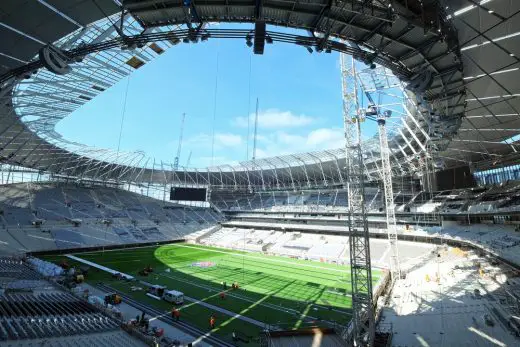
photo © Greshoff
New Chelsea Football Stadium
Architect: Herzog & de Meuron
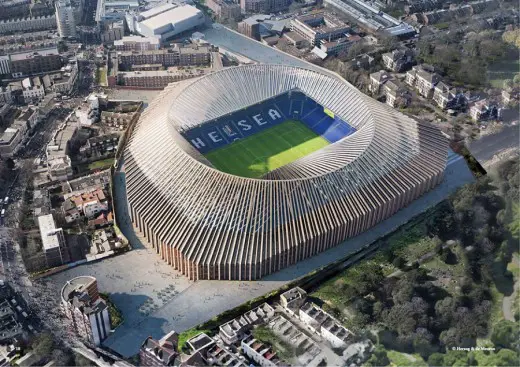
image from architect
Emirates Stadium : Arsenal FC ground, London
Design: HOK Sport Architecture
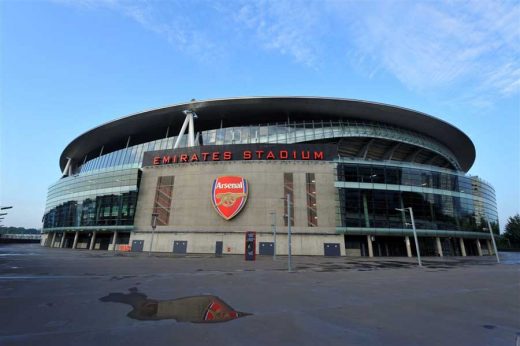
photo © Nick Weall
Wembley Stadium, London
Design: Foster + Partners / HOK Sport
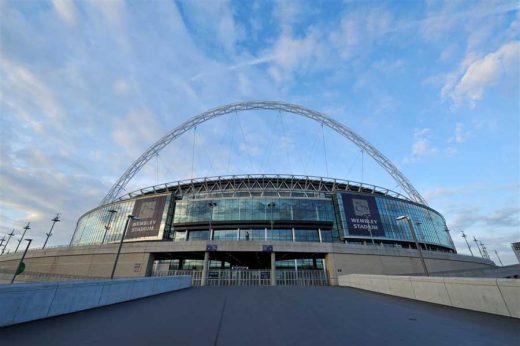
photo © Nick Weall
Comments / photos for the From Blueprint to Field: The Evolution of Sports Arena Design page welcome

